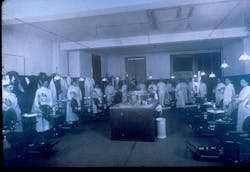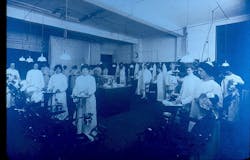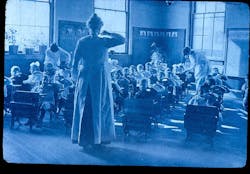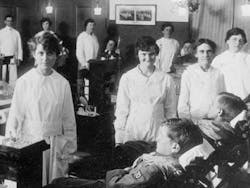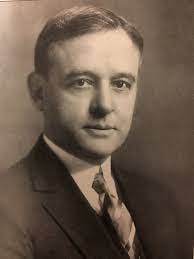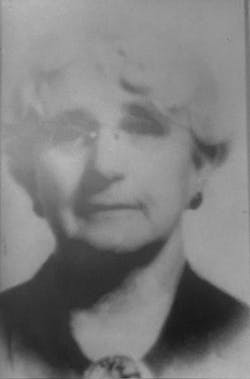Irene Newman’s legacy, and the pursuit of professional recognition in dental hygiene
At the dawn of the 20th century, Irene Newman of Bridgeport, Connecticut, stood at the forefront of a revolutionary idea: preventive dentistry. She did not set out to become a pioneer in the formation of an essential health-care profession. Why am I discussing events from more than a century ago that shaped the dental hygiene profession? Because today, we again stand at the precipice of how dentistry is being practiced.
Burnout rates are high, job satisfaction is low, and we’re experiencing an exodus from the field by hygienists seeking better working conditions, more benefits, and respect in the workplace.1 Can looking backward help us move forward? History often repeats itself, allowing us to navigate current issues more effectively. In terms of fighting for professional recognition, autonomy, scope of practice, respect, and acceptance, dental hygiene history is certainly repeating.
Irene Newman’s story
In 1906, Jennie Irene Newman was a divorced single mother who needed a way to support herself and her son. A long-time friend of the family, Dr. Alfred Fones, recognized her intellectual curiosity and trained her to be his dental assistant. At the time, dentistry was more about emergency care than prevention.
The idea that microscopic organisms could be responsible for oral disease was new, and Dr. Fones embraced the idea.2 He taught Irene everything he’d learned about lowering the number of bacteria in the mouth, and how to scale teeth using models he made from extracted teeth mounted in plaster. After a year of one-on-one training, Irene started performing prophylaxis procedures. Dr. Fones coined the term “dental hygienist,” and Irene Newman was the first.
What Irene faced each day makes our “Sunday scaries” pale in comparison. Consider her world in 1907. One out of five people owned a toothbrush. People were not comfortable with a woman treating them, especially for a prophylaxis, which was an unknown procedure. Women were not meant to be health-care providers. They didn’t even receive the right to vote until 1920!3
Electricity was not yet available in most homes and small commercial locations, so a gas flame was used to illuminate the oral cavity. Antibiotics were not yet discovered, radiography would not be in widespread use in dentistry until the 1930s, and local anesthetic carpules were nonexistent.4,5 Patient care was done standing up by a chair that only minimally reclined.
Ergonomics was not a field of study yet, and there was no personal protective equipment or magnification. Scalers were rudimentary, and polishing was done with pumice and an orange stick. Today’s hygienists would certainly turn and run. However, in Irene Newman’s words, “The work was there to do, so I did it.”6
The first dental hygiene school
The Connecticut Dental Board encouraged Dr. Fones to create a school for dental hygienists with a standardized curriculum taught by top dental and medical instructors. The course was nine months, and Dr. Fones spared no expense. The clinic had modern fixtures, electric lighting, and S.S. White dental chairs. Every lecture was recorded for inclusion in Dr. Fones's textbook, Mouth Hygiene, published in 1916.
After the graduation of the first Fones class, before the luncheon and accolades, Dr. Fones asked the graduates to meet and officially form the Connecticut Dental Hygienists' Association. They elected officers, and Irene Newman became the president.
By 1923, there were enough states in the association to form the American Dental Hygienists' Association, which awards someone with the Irene Newman award for clinical excellence each year. The majority of the 27 women who graduated from the first class took jobs in the Bridgeport, Connecticut, public schools.
Prevention becomes popular
It was Dr. Fones's vision that prevention be taught to children to achieve dental health for a lifetime. Hygienists worked diligently for $1.50 a day to improve the decay rates in children. More dentists followed Fones’s example and began preventive services in their offices. The result was a population that became healthier, and whose children suffered less childhood disease and school absences.
When the Spanish flu epidemic of 1918 broke out, Bridgeport had a lower mortality rate than any other city its size. The effect of dental hygiene on the town’s population had boosted immune systems, which verified the oral-systemic connection and increased the need for more dental hygienists. They were saving lives!
Irene Newman and Dr. Fones dedicated the following decades to speaking to many state dental associations to teach them how to start dental hygiene schools and establish licensure. Irene held the very first dental hygiene license.
A hygienist today may feel far removed from this story, but parallels do exist, especially in the fight for autonomy, and the need for public health outreach and expanded scope of practice. In an insurance-driven climate, dental offices are forced to shorten hygiene appointments, neglect instrument maintenance and replacement, and may hire managers who do not understand the fundamental responsibilities of a dental hygienist.
In school, we learn how to treat patients in a comprehensive and ethical manner. What do we leave out if we’re relegated to a 30-minute prophy? Taking blood pressure? Full-mouth probing? Oral hygiene instructions? There’s no good answer, but the solution is not to flee the profession. If hygienists do not do this important work, who will?
We dedicate ourselves to helping people. Every generation faces new challenges, and I would suggest that it often means stepping outside our comfort zone—not by leaving our chosen profession, but by refusing to work in substandard environments. We should not accept a job that compromises our integrity. There are hygiene positions with good work ethics that match ours.
I worked through the ’70s and ’80s “wet dentistry” era without PPE, and before the Bloodborne Pathogen Standard and OSHA came on the scene. I scaled bare-handed through the AIDS epidemic, before the hepatitis B vaccine was available, and there were no scavengers on nitrous oxide tubing. I dropped liquid mercury into a capsule to mix with alloy pellets for amalgam, then wrung out the excess mercury bare fingered with a “squeeze cloth.”
I greatly appreciate all we have today. But when I started out, the work was there to do, so I did it. The work is there for you to do too, and I implore you to stay committed to your unique skills and devotion to dental hygiene. Just like Irene Newman.
Editor's note: This article appeared in the January/February 2025 print edition of RDH magazine. Dental hygienists in North America are eligible for a complimentary print subscription. Sign up here.
References
- Dental education at a crossroads: Challenges and changes. National Library of Health. https://www.ncbi.nlm.nih.gov/books/NBK232261/
- Fones AC. Mouth hygiene. Philadelphia, Pennsylvani. Lea & Febiger. 1916.
- Ivanoff C. Maude Morris Hincks – Bridgeport's woman of substance – The fight for the right to vote. Bridgeport Library. https://bportlibrary.org/hc/social-justice/maude-morris-hincks-bridgeports-woman-of-substance-the-fight-for-the-right-to-vote/
- Jacobsohn PH, Kantor ML, Pihlstrom BL. The X-ray in dentistry, and the legacy of C. Edmund Kells: A commentary on Kells CE. The X-ray in dental practice. J Am Dent Assn. 2013;144(2):138-142. doi: 10.14219/jada.archive.2013.0092
- Horgan J. Discovery of penicillin. World Encyclopedia. June 29, 2024. https://www.worldhistory.org/article/2490/discovery-of-penicillin/
- Transcript from interview with Irene Newman and the CDHA. 1955. Fones School of Dental Hygiene archives, University of Bridgeport.
- Motley W. American Dental Hygienists’ Association: 50 years of growth. J Am Dent Assn. 1973;87(6):1125-3111. doi: 10.14219/jada.archive.1973.0555
- Taswell C. Eighty-five hundres souls: the 1918-1919 flu epidemic in Connecticut. December 12, 2021. https://connecticuthistory.org/eighty-five-hundred-souls-the-1918-1919-flu-epidemic-in-connecticut/
- Connecticut Health Bulletin. Infectious diseases. https://portal.ct.gov/-/media/Departments-and-Agencies/DPH/dph/infectious_diseases/flu/pdf/Connecticut-Health-Bulletin-April-1919.pdf
- Risom L. Dental hygiene in Connecticut: celebrating 100 years of care and prevention. September 2012. The Communicator CSDA Newsletter.



